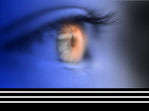NAHUSHA
Shraddha Chauhan and Fatah Singh
17E/257, Nandanvan, Chaupasani, Jodhpur(India) 342008
email: vipink@mail.nplindia.ernet.in
Nahusha, the son of Manu,happens to be the seer of Rigvedic mantras 9.101.7-9
:
Ayam Puushaa rayir bhagah somah punano arshati.
Patir vishvasya bhuumano vyakhyad rodasee ubhe.Samu Priyaa anuushata gaavo madaaya
ghrishvayah. Somaasah krinvate pathah pavamaanaas indavah. Ya ojishthas-tamaa bhara pavamaan shravaayyam. Yah pancha charshaneerabhi
rayim yen vanaamahe.
Earlier three mantras(9.101.4-6) happen to be of seer yayaati, the son of Nahusha. Nahusha is desirous of such a soma
which is the controller of all happiness and is the most powerful. Nahushah word is actually a transformation of the word
Nahuh which is derived from the root Nah. The element Manu tries to bond together personal intelligence, mind and five sense
organs. He gradually reaches from Nahuh to Nahustar, then leaves all these seven and then declares himself as Nahushah, the
killer of the seven(Rigveda 10.49) :
Aham saptahaa nahusho nahustarah praashraavayam
shavsaa turvasham yadum. Aham nyanyam sahsaa sahaskaram nava vradhato navatim cha vakshyam.
This
Nahusha is actually Indrah Vaikunthah who is the god of Rigveda 10.47 and is
both seer and god for Rigveda 10.48-50. According to one anecdote (Brihad Devataa 7.49 and Rigveda 10.47 Sayana Bhashya),
the lady Vikunthaa made hard penances to get a progeny equivalent to Indra, hence
she got a son like Indra. It is heard about Vaikunthaa Indra that in the beginning, he destroys demons, but gradually he gets
influenced with demonical powers and starts to obstruct divine work( Brihad Devata 7.49-57).
This gives us a picture where there is a continuity of the duality of Sat and
Asat or divine and non divine. At this level is required the penance for going from Nahusha to Nahustara. In a way, it is
the path of leaving non divine individuality and reaching to a central point or Naabhi. The duty of a Nahusha type individual
is to control all the bodily defects and then control the pranic progeney. It can be said that Nahus is related in the beginning
to the gross body. Proceeding from multiplicity of the gross body towards integrity gives rise to the birth of Nahusa the
Indra. This nahusha the Indra is able to penetrate the seven abodes of seven top pranas (Rigveda 10.99.7) :
Sa nritmo nahusho asmat sujaatah puro abhinad
arhan dasyuhatye.
And he helps in development of ninety nine abodes of Shambara( Actually, Mahendra,
and not Nahusha, destroys 99 abodes of demons) (Rig.1.122.10) :
Aham nyanyam sahasaa sahaskaram nava vradhto navatim
cha vakshayam
There
is one more quality of Nahusha mentioned in Rigveda 1.122.10.
Adha gmanta nahusho havam suureh shrotaa raajaano
amritasya mandrah. - - - - - -Etam shardham dhaam yasya suureh ityavochan dashatayasya nanshe
Here shardham is symbolic of some higher state of a crowd. The purpose of nahusha
is to control all the bodily defects so that these may be able to offer oblations to gods. These controlled progeny have been
called at other places as maanushee vishah.
Even after reaching the higher stage of development, Nahusha could not attain the stage of Indra, the husband of Shachee.
Hence, in the anecdote of Nahusha in Puranas, there is a fall of Nahusha who tries to make Shachee her wife. Actually, Shachee
is the name of a big power of the highest god or parbrahman. The godly power Shachee is attainable for every person by the
gesture of God. She is the power of not only her husband Indra, but of every other person also. Still, she can not remain
confined to a particular individual. Though Indra the god can reside in every individual body sea of consciousness as a seer
of atman, but her Shachee wants to get integrated only with his infinite form. On the other hand, though Nahusha has attained
human qualities, he is still bound to his own individuality. Thus, though Nahusha is symbolic of higher state of humanity
or higher state of mind(Manu), he is not highest.
NAHUSHA IN VEDIC GLOSSARY
In vedic glossary of terms, all the terms which are symbolic of man or human
qualities, happen to exist in their plural form. It seems as if Nahushah is a singular form, but actually this also happens
to be a plural form. This is clear from the following mantra(Rigveda 10.80.6) :
Agnim visha eedate maanusheeryaa agnim manusho nahusho vijaataah.
Here the human progeny are said to have taken birth in different forms by the
names of Manushah and Nahushah. Hence, along with manushah, nahushah is also to be taken as a plural word. Nahushah is a plural
of Nahus. That is why there is reference in Rigveda of Nahushee vishah, just like Manushee vishah.
REFERENCES
Shraddha Chauhan
Vedic Exploration of Human Personality ( In Hindi). (Gaveshnaa Prakashan, 17E/257, Nandanvan,
Chaupaasani, Jodhpur, India, 3420008). Price Rs.225/-
The above write up is an English language sample of the numerous writings of elderly vedic
scholar Dr. Fatah Singh.

